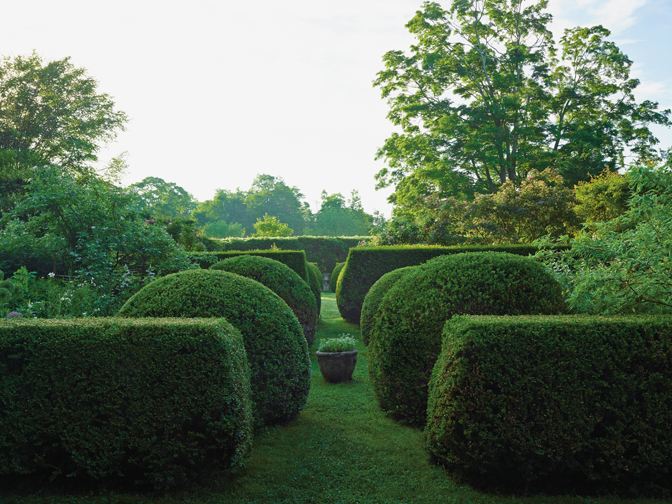In 1988, Frank Cabot — creator of Stonecrop garden in Cold Spring — took a trip to California with his wife, Anne. Already he had begun thinking about forming a national organization to preserve America’s exceptional gardens. But the idea crystallized when they saw the marvelous variety of cacti and other succulents in Ruth Bancroft’s garden outside San Francisco and heard her concerns about the garden’s future once she could no longer care for it.
“As we drove away, I said to my wife, ‘We have to find some way to help this woman.’ And she said, rather facetiously, ‘Why don’t you start a garden conservancy?’”
That quote comes from the glorious new book “Outstanding American Gardens: A Celebration” (Stewart, Tabori & Chang, $50, 272 pages), which is helping mark the silver anniversary of The Garden Conservancy in Cold Spring.
“The Garden Conservancy chose the Ruth Bancroft Garden in Walnut Creek, California as our first project because of its artistry. Fast forward 25 years to the current West Coast drought, and the educational value of preserving a model dry garden such as this becomes even more compelling,” says Jenny du Pont, president and CEO of The Conservancy and a WAG cover subject (May 2014). “The book features eight of our Preservation Gardens — a small sampling of the many we have helped save for future generations to enjoy. There are also 42 examples of privately owned gardens that have opened their gates to communities through Open Days, our national garden visitation program.”
The local Preservation Garden included in the book — which is edited by Page Dickey, with photographs by Marion Brenner — is Rocky Hills in Mount Kisco. Created in the mid-1950s by William and Henriette Suhr — a Frick Collection art conservator and an interior designer respectively who knew nothing about gardening initially, but everything about aesthetics — Rocky Hills is best known for its spring flowering plants.
“Thousands of bulbs — snowdrops, crocuses, and wood hyacinths — carpet the landscape, together with clouds of pale blue forget-me-nots,” the book observes. “The collections of rhododendrons and azaleas include rare varieties seldom seen in the area.”
Both Fairfield and Westchester counties are well represented in the larger “Private Gardens, Open Days” section of the book. Among the creations here is Redding’s In Situ, eight acres of open fields, woods and small creeks that serve as a backdrop for its mission.
“Its owner offers it as a setting in which art, fashion, music, and culinary arts companies can stage charity events; the resulting funds help provide college scholarships to underprivileged art students. With that mission in mind, landscape designer Richard Hartlage has created a series of garden spaces, or ‘rooms,’ that each offer a sense of surprise and celebrate the softly rolling land.”
In Ridgefield, Ken Uhle — a landscape architect for the Westchester County Parks department — presents visitors with a one-acre sanctuary of lily ponds, shrubs and small trees threaded by paths and a rocky stream.
Other Connecticut spaces include Lee Link’s Sharon place, known for its greenhouse; and the Falls Village garden of interior designer Bunny Williams, which combines her requisite formality and randomness in a series of sunken outdoor rooms that frame an elegant Federal manor house with a conservatory.
Back in Westchester, Ed and Vivian Merrin’s Cortlandt Manor garden offers a stumperie created by the Hurricane Sandy felling of a giant oak. The White Garden in Lewisboro, studded with neoclassical sculptures, features Japanese mosses and water effects. Dick Button’s Ice Pond Farm in North Salem spotlights figure skating touches as befits the two-time Olympic gold medalist, while at neighboring Duck Hill, owned by editor Dickey and husband Bosco Schell, boxwood balls prevail, drawing the eye hither and thither.
Geometric terraces and a contemporary house are softened by grasses and perennials in another Westchester garden, designed by Oehme, van Sweden & Associates, while some 1,500 visitors, many of them children, relish the red, yellow, orange and purple tapestry of Japanese maples at Iroki, the Mount Kisco garden of Judy and Michael Steinhardt.
These speak to the infinite variety of the gardens — and their generous owners.
“Gardens stimulate all five senses. They bring beauty, spirituality, and solace into daily life,” du Pont says. “Over the course of 25 years, we have found that anyone — or any community — has the potential to build and sustain wonderful gardens that can be enjoyed for years to come.”






